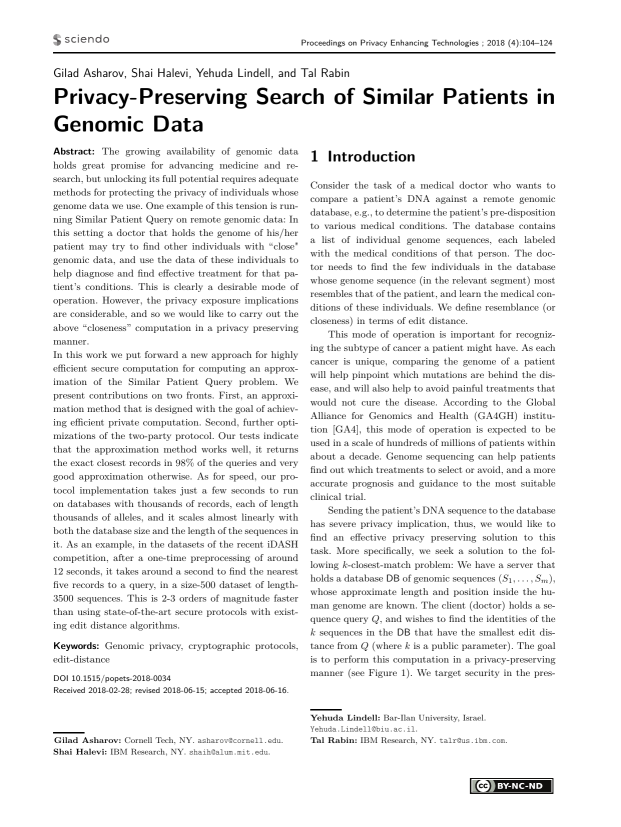Privacy-Preserving Search of Similar Patients in Genomic Data
Authors: Gilad Asharov (Cornell Tech, NY.), Shai Halevi (IBM Research, NY.), Yehuda Lindell (Bar-Ilan University, Israel.), Tal Rabin (IBM Research, NY.)
Volume: 2018
Issue: 4
Pages: 104–124
DOI: https://doi.org/10.1515/popets-2018-0034
Abstract: The growing availability of genomic data holds great promise for advancing medicine and research, but unlocking its full potential requires adequate methods for protecting the privacy of individuals whose genome data we use. One example of this tension is running Similar Patient Query on remote genomic data: In this setting a doctor that holds the genome of his/her patient may try to find other individuals with “close" genomic data, and use the data of these individuals to help diagnose and find effective treatment for that patient’s conditions. This is clearly a desirable mode of operation. However, the privacy exposure implications are considerable, and so we would like to carry out the above “closeness” computation in a privacy preserving manner. In this work we put forward a new approach for highly efficient secure computation for computing an approximation of the Similar Patient Query problem. We present contributions on two fronts. First, an approximation method that is designed with the goal of achieving efficient private computation. Second, further optimizations of the two-party protocol. Our tests indicate that the approximation method works well, it returns the exact closest records in 98% of the queries and very good approximation otherwise. As for speed, our protocol implementation takes just a few seconds to run on databases with thousands of records, each of length thousands of alleles, and it scales almost linearly with both the database size and the length of the sequences in it. As an example, in the datasets of the recent iDASH competition, after a one-time preprocessing of around 12 seconds, it takes around a second to find the nearest five records to a query, in a size-500 dataset of length3500 sequences. This is 2-3 orders of magnitude faster than using state-of-the-art secure protocols with existing edit distance algorithms.
Keywords: Genomic privacy, cryptographic protocols, edit-distance
Copyright in PoPETs articles are held by their authors. This article is published under a Creative Commons Attribution-NonCommercial-NoDerivs 3.0 license.

